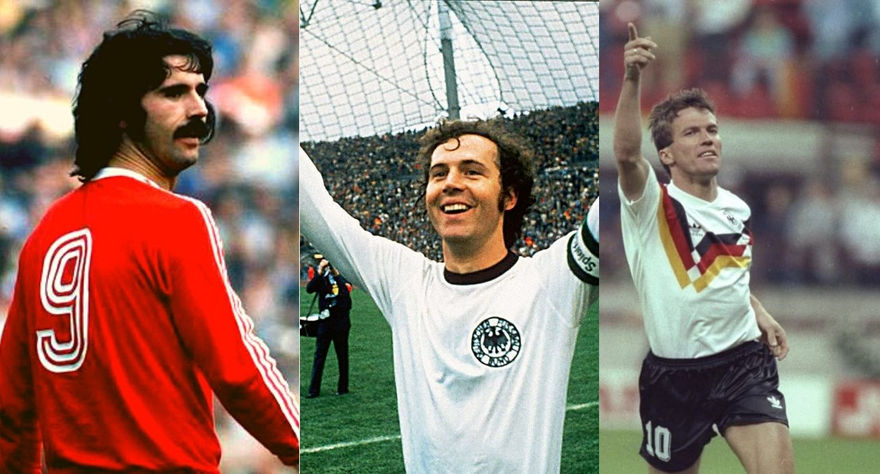Germany’s footballing identity is built on more than just talent—it’s grounded in relentless precision, tactical discipline, and strategic innovation. The story of Germany football tactics history is one of transformation—from rigid formality to fluid dynamism. Over the decades, German teams have engineered styles that not only dominate matches but also redefine how the game is played globally.
With each generation, Germany evolved its tactical approach, learning from failure, embracing change, and exporting new footballing philosophies across continents. This is not just history—it’s the blueprint of modern football.
The Origins of Germany Football Tactics History
Early 20th Century: Foundations of German Structure
In the early 1900s, German football adopted the tactical rigidity seen in military formations—structured, disciplined, and highly organized. The “W-M” formation, borrowed from English influence, became a tactical cornerstone. Matches focused on physical strength and straightforward execution over creativity.
This phase laid the groundwork for a national identity rooted in team over individuality, a theme that would persist for decades.
Post-War Rebirth: Discipline Meets Opportunity
Post-World War II Germany was fractured, but football became a vehicle for national pride. West Germany began to re-emerge tactically with an emphasis on defensive solidity and structured counter-attacks. Meanwhile, East Germany pursued similar principles in isolation, focusing on a more collective style of play due to their socio-political structure.
This era birthed a unique identity—cerebral football, tactical awareness, and mechanical cohesion.
The 1954 Miracle of Bern: Tactical Pragmatism Emerges
Germany’s 1954 World Cup victory against the fabled Hungarian Golden Team shocked the football world. It wasn’t raw talent but tactical genius that won the match.
Sepp Herberger’s Tactical Blueprint
Sepp Herberger masterminded one of the greatest upsets in football history using:
- Flexible formations that adapted mid-match.
- Deep defensive lines to counter Hungary’s pace.
- Targeted man-marking to neutralize key opponents.
Germany’s tactical pragmatism was born. The “Miracle of Bern” remains a lesson in preparation, mental fortitude, and adaptability.
1970s West Germany: The Beckenbauer Effect
The 1970s ushered in one of Germany’s most iconic tactical evolutions.
Libero Role Redefined
Franz Beckenbauer, dubbed “Der Kaiser”, transformed the traditional sweeper into a creative, attacking Libero. Instead of merely defending, he:
- Initiated counter-attacks.
- Joined midfield transitions.
- Controlled match tempo from the back.
Combining Flair with Structure
Germany fused defensive excellence with fluid transitions, marrying tactical freedom with collective discipline. Their triumph in the 1974 World Cup showcased the maturation of German tactics—structured yet spontaneous.
Rudi Völler and the 1990 World Cup: A Transition of Identity
In the 1990s, Germany’s identity evolved again, favoring results over artistry.
Efficiency over Flair
Led by Rudi Völler and Lothar Matthäus, Germany’s play was:
- Direct, fast, and physical.
- Focused on capitalizing on mistakes.
- Built around defensive resilience and counter-attacks.
Tactical Flexibility and Ruthless Execution
The German side became known for its cold-blooded efficiency, often winning games through mental toughness and situational control rather than beauty.
The 2000s Crisis: A Tactical Reset
Despite past success, the early 2000s were a wake-up call. Poor performances at Euro 2000 and 2004 demanded introspection.
Youth Academies and the DFB Revolution
The German Football Association (DFB) overhauled its infrastructure:
- 366 regional training centers were established.
- Focus shifted to technical skill, creativity, and tactical education.
- Bundesliga clubs were mandated to invest in academies.
Shift Toward Possession-Based Play
Germany embraced:
- Short-passing systems inspired by Spanish football.
- High pressing and coordinated build-up play.
- A new generation of players like Lahm, Schweinsteiger, and Özil who were technically proficient and tactically versatile.
2014 World Cup Triumph: Peak Tactical Evolution
Germany’s journey reached its tactical pinnacle during the 2014 FIFA World Cup in Brazil. Under the astute leadership of Joachim Löw, the German national team delivered one of the most comprehensive displays of tactical dominance ever seen on the world stage.
Joachim Löw’s Tactical Masterclass
Löw modernized Germany’s approach by integrating:
- Gegenpressing (counter-pressing) as a defensive weapon.
- Short, rapid-passing possession football influenced by Spain.
- A seamless switch between 4-2-3-1 and 4-3-3 formations depending on opposition strength and style.
His system emphasized:
- High line defense with fast center-backs.
- Intelligent midfielders who could control tempo (Kroos, Schweinsteiger).
- A false nine or fluid front three exploiting spaces between defenders.
High Pressing, Fast Recovery, Controlled Possession
The 7–1 demolition of Brazil in the semi-finals wasn’t just a fluke—it was the culmination of tactical evolution, psychological conditioning, and flawless execution. Germany dictated pace, space, and control from minute one to ninety.
This World Cup victory wasn’t just about winning—it was about asserting tactical superiority on a global stage.
The Gengenpressing Revolution
Jürgen Klopp’s Influence on Modern Tactics
One of the most influential German tacticians of the modern era, Jürgen Klopp, transformed not only club football but also global tactical thinking. His brand of “Gegenpressing” (immediate pressure after losing the ball) became a global phenomenon.
With Borussia Dortmund, Klopp’s side:
- Pressed aggressively in packs.
- Transitioned from defense to attack in seconds.
- Maintained vertical compactness with relentless energy.
This high-octane system reshaped how coaches approached transitions and space management.
From Borussia Dortmund to Liverpool
Klopp’s tactical legacy extended to Liverpool FC, where he continued his pressing philosophy with tweaks:
- More structured build-up phases.
- Situational long balls.
- Defensive solidity with advanced fullbacks.
Germany’s tactical evolution now had a global ambassador in Klopp, as his methods influenced coaches from Europe to South America.
Germany’s Tactical Legacy in Club Football
Influence on Bundesliga Teams
German club football embraced the national tactical identity:
- RB Leipzig, Bayern Munich, and Bayer Leverkusen adopted aggressive pressing and rapid transition play.
- Tactical education became standard at the youth level.
- Coaches like Julian Nagelsmann and Thomas Tuchel emerged with advanced data-driven approaches.
Germany turned its clubs into laboratories for tactical experimentation.
Exporting Tactics Across Europe
German coaches and ideas flourished internationally:
- Tuchel at Chelsea and PSG implemented structured pressing with adaptive shape.
- Nagelsmann brought analytics-driven fluid formations to the fore.
- Rangnick’s Red Bull system reshaped clubs in Austria, Germany, and even England.
Germany didn’t just evolve tactics—they exported a school of thought.
Challenges in the Post-2018 Era
Despite years of dominance, the 2018 World Cup crash in the group stage signaled a need to reassess.
Tactical Stagnation and Predictability
Löw’s tactics became:
- Overly reliant on possession without penetration.
- Vulnerable to counterattacks.
- Devoid of vertical thrust and spontaneity.
Opponents adapted. Germany had become too predictable.
The Hansi Flick Era: Seeking Tactical Identity Again
Hansi Flick, with his Bayern Munich success, tried to reintroduce:
- Quick transitions.
- Overlapping full-backs.
- Aggressive, front-foot football.
However, inconsistency and defensive frailties remained. The team struggled to find its new tactical soul, caught between old ideologies and new challenges.
FAQs: Germany Football Tactics History
1. What is the “Gegenpressing” tactic associated with Germany?
Gegenpressing, or counter-pressing, is a tactic where a team immediately pressures the opponent after losing possession to regain control quickly. Popularized by Jürgen Klopp, it’s a hallmark of modern German football.
2. Who introduced tactical innovation to German football?
Sepp Herberger, Franz Beckenbauer, and later Jürgen Klopp and Joachim Löw are among the major figures who shaped and evolved German tactics over time.
3. How did Germany win the 2014 World Cup tactically?
By blending high pressing, fluid formations, and a disciplined possession game, Germany overwhelmed teams with intelligent positioning and relentless ball recovery.
4. Why did Germany struggle post-2018?
Tactical stagnation, predictability, and failure to transition from possession-heavy systems to more dynamic styles led to their decline in major tournaments.
5. How is German football taught at the youth level?
Since the early 2000s, the DFB implemented academy reforms emphasizing technical skill, tactical awareness, and mental strength from a young age.
6. What role did Franz Beckenbauer play in changing tactics?
Beckenbauer redefined the sweeper role, turning it into an attacking asset. His tactical intelligence helped Germany add creativity to its structure.
Conclusion: Germany’s Lasting Tactical Footprint
From rigid military-inspired formations to fluid, modern pressing systems, Germany football tactics history is a journey of continuous reinvention. What began as structured conservatism transformed into global leadership in football intelligence. German tactics have shaped not just national teams but also the philosophies of elite clubs and top managers worldwide.
The beauty of Germany’s tactical legacy lies not only in its past glories but in its unrelenting commitment to evolve. Whether it’s pressing with intensity, passing with intent, or defending with unity—Germany’s influence will continue to redefine how the world plays football.










